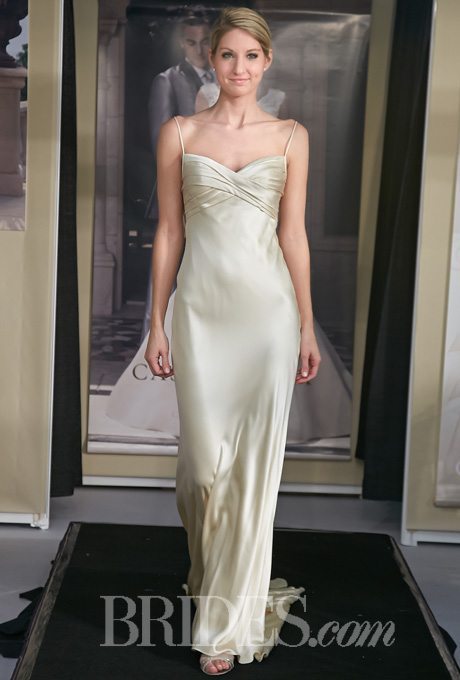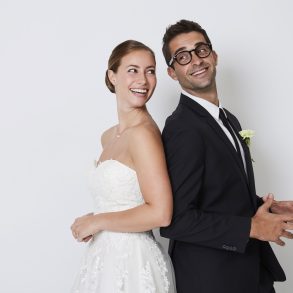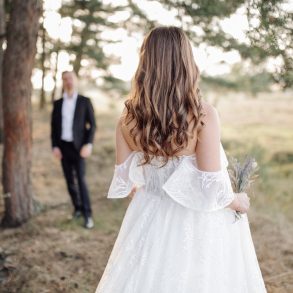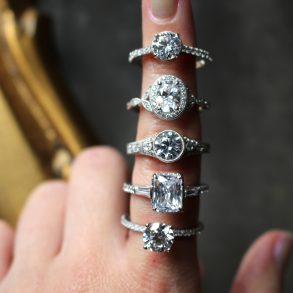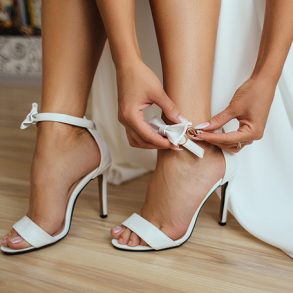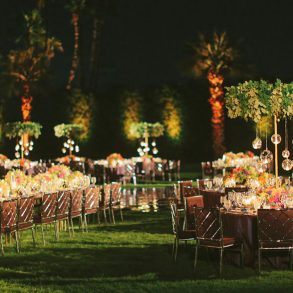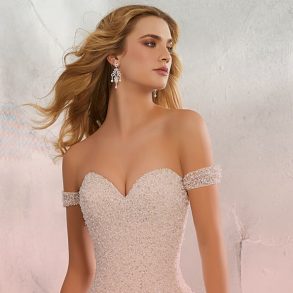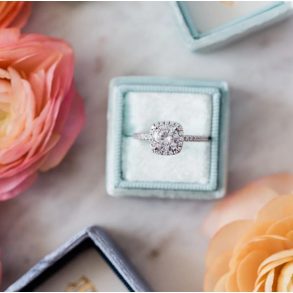Do I Have To Wear A Fancy Gown To My Second Wedding?
Question
I am a 55 yr old divorcee and he is a 58 yr old widower. We are getting married in a church. The idea of tripping down the aisle in a fancy gown gives me the heeby jeebies and so I wonder if I could wear the kind of outfit I would wear to my daughter’s wedding?
Answers
Consider the following when shopping for a wedding dress for your second wedding:
Before Queen Victoria set the trend with a white wedding gown way back in 1840, most brides wore their best dress, in any color, on their wedding day. In the years following Victoria’s and Albert’s royal wedding, white came to symbolize purity—a tradition that prompted heated debate over whether encore brides could wear white for a second wedding.
In today’s fashion world, the answer is a resounding “yes”! Now regarded as a symbol of joy instead of virginity; white is a perfect color for dresses for a second wedding. Pastels, champagne and ivory are also popular color choices for your second wedding dress.
Second wedding dress selection guidelines can easily apply to all brides: Your gown’s formality should match the tone or theme of your wedding celebration. With so many available design and fabric options, you should have no difficulty finding a gown that matches your personal style and taste.
Your second wedding dress should reflect your personality, lifestyle and fashion sense. Consider selecting a cocktail-length dress or beautiful couture suit that you can wear again or a long dress that can be shortened for later use. Take your cue from the size, time and day, and formality of your wedding ceremony and reception. And, although none of us love to admit that we’re not 20 anymore, do try to select a dress that is age appropriate. Let’s face it, if you’re over 30, you probably have a few more little somethings you won’t want to show off to the world! There’s nothing worse than seeing a woman who appears to be desperately hanging on to her youth. No, I don’t mean you have to wear a frumpy old suit from the Leave It To Beaver age! (Though, some of the suits from that era are coming back in style) Just choose a dress that is right for your age group or even for an older bride.
It helps to know what flatters your figure when you’re shopping for that perfect second wedding dress. Whether you’re pear-shaped or petite, top-heavy or tall, choose the right cut for your body type to highlight your best features and downplay those that concern you. Bring along a friend, your mom or even your teenage daughter to get a second opinion, and be sure to wear the appropriate undergarments so you’ll know exactly how your dress will look on your big day.
Now, there aren’t too many etiquette attire rules for second-time brides, but one rule that still holds true is to forgo a blusher veil that covers the face, a traditional style reserved for the very young, first-time brides and one of the few real fashion “don’ts.” (Note: Etiquette expert Peggy Post says it’s acceptable for encore brides to wear a veil that cascades down the back if your wedding is formal.) Try substituting a hat, hair ornament/clip or fresh flowers. Splurge and have a professional stylist come to your home to create a glamorous updo! Be sure to schedule this appointment several months before the big day so you can try out different styles and hair ornaments. You don’t want any last-minute surprises, and you may decide to cut or even grow your hair.
Trains can be fine for formal weddings, but keep them simple, again matching the style of the wedding.
With so many available choices in headpieces and wedding veils for second wedding attire, search the Internet for beautiful designs, and print out photos of the ones you like. Buy a few bridal magazines, and cut out some of your top choices. Then visit local bridal shops, and ask experienced consultants for expert guidance.
One advantage second-time brides have over their first time planning a wedding is experience. You’ve been there (or your groom and his family has been there!) and done that. Learn from your mistakes and from what worked previously. It’s okay to incorporate some of what went right the first time around.

